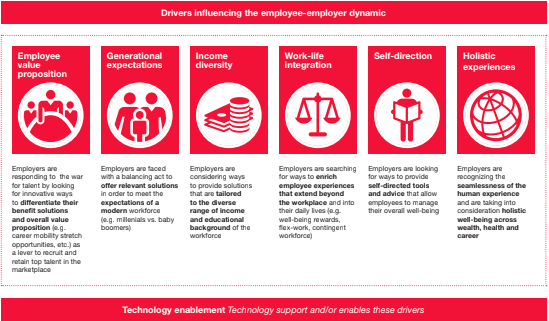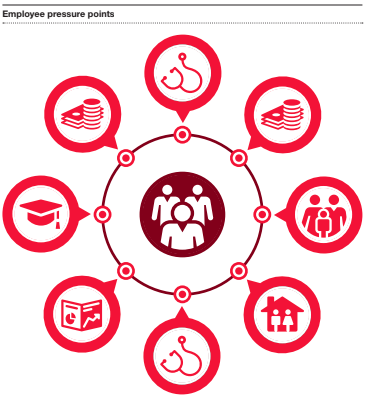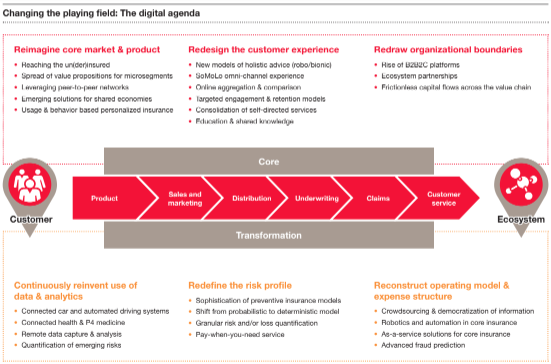These regional profiles are taken from our inaugural Insurance Nexus Global Trend Map, an in-depth quantitative-qualitative account of insurance and insurtech trends the world over. (You can access all seven of our regional profiles straight away by
downloading the full Trend Map here.)
Our Europe profile combines quantitative insights derived from our global survey, some of which we covered in
our previous post introducing our regional profiles, and qualitative perspectives from our two in-region commentators:
- Switzerland-based venture capitalist Spiros Margaris (InsureScan.net, moneymeets and kapilendo)
- Charlotte Halkett, former general manager of communications at U.K.-based telematics provider Insure The Box (now MD of Buzzvault at Buzzmove)
First, a quick overview of the salient stats from our survey, as they manifested themselves in Europe..
Key Stats: a Quick Recap
--- i) The External Challenges: Europe
In Europe, the top three external challenges facing the insurance industry as a whole follow the global trend we outlined in our
earlier post on industry challenges: technological advancement, changing customer expectations and digital channel capabilities.
Looking further down the table, some points of note are the higher position attained by increased regulation and the lower positions of new emerging risks and catastrophe risk. Compared with some of the other regions we examine, like Africa and Asia-Pacific, Europe is relatively sheltered from natural catastrophes and the associated risks that they bring, which possibly explains the lower scores we find for new emerging risks and catastrophe risk.
--- ii) The Internal Challenges: Europe
Internally, the top challenges are close to the global trend we outlined in our earlier post on industry challenges: Lack of innovation capabilities and legacy systems take first and second place, with siloed operations edging out finding and hiring talent for third place.
--- iii) Insurer Priorities: Europe
Our discussion on Europe falls into five broad chapters, the first two of which we cover in today's post:
- Growth opportunities in a relatively saturated market
- The European consumer and Europe’s early adopter status
- How European insurers can deliver on their customer promise with new tech
- Dynamic, real-time insurance and IoT
- Progress on developing connected insurance models across the continent
Chapters 3-5 of our Europe profile will be presented in our next post.
See also: 10 Insurtechs for Dramatic Cost Savings
1. Old Problems — New Solutions
While Europe, with a population of 750 million people, is a larger market than North America, it is still less than a fifth of the size of what we estimate for our Asia-Pacific region (4 billion). We therefore expect Europe to be relatively well-aligned with North America in terms of the range of market opportunities on offer.
That said, Europe does comprise a broader spectrum than North America, including some of the world’s leading economies (U.K., Germany, France) alongside more emerging markets (like much of the former Soviet bloc), which are not as advanced per se but offer attractive growth opportunities.
As is the case globally, low interest rates are hurting insurers’ investment outlook and forcing them to refocus on their core underwriting business. In Europe, this situation is compounded by a stringent regulatory environment (Solvency II), which makes running a profitable investments business harder still.
"Solvency II regulation is good, but in the kind of environment where we have low interest rates, it makes it much harder for insurers to find opportunities to make money," comments Swiss-based VC Spiros Margaris.
This is borne out in the survey stats we gathered on regulation, which we presented in our earlier post on
regulation:
- Among our key regions, Europe leads on regulation as a priority area
- In our regulation section, a relatively high proportion of European respondents indicated that regulation was impeding progress at their organizations "a lot," with Solvency II and the Insurance Distribution Directive (IDD) being identified by European respondents as cause for concern
- Also, consistent with our other regions, a large majority of European respondents believed regulation was posing more of a challenge to their organizations currently than during the previous 12 months
"European carriers have a raft of incoming regulation to implement and prepare for… In addition to the implementation of Solvency II, we can also point to the IAIS’s Insurance Capital Standard (ICS) slated for 2020, the introduction of International Financial Reporting Standards (IFRS) and the transposition into national law of the Insurance Distribution Directive (IDD) in time for 2018." — James Vincent, general manager at Insurance Nexus
Interest rates and regulation make it imperative for insurers to seek growth and profit opportunities elsewhere. And while there does exist a low-end market opportunity in Europe, this is nowhere near on the scale we see in Asia-Pacific, Africa and LatAm. This means that, in the main, insurers must focus on established demographics and look either for entirely new risk categories or for ways to serve their clients’ existing risks better and more extensively.
A key emerging risk area on the commercial side is cybersecurity. This isn’t entirely new as a risk category but looms larger and larger for any company operating with customer data (i.e. every company). Unfortunately, cyber risk is not an easy category of risk to insure, given the wide range of dependencies involved, spanning everything from reputational damage to share-price hits. It is partly for these reasons, Margaris says, that many insurers have been reluctant to jump on the cyber bandwagon, at least for now.
Cybersecurity is also an issue that insurers are on the receiving end of, insofar as they steward vast quantities of customer data, all of which must be secured. Consistent with our other regions, a majority of European (re)insurers are very concerned about information security breaches, as we saw in our earlier post on
cybersecurity; fortunately, a majority also have mitigation plans and have adjusted their security strategy to reflect the rise of new digital platforms.
Beyond exploring completely new risk categories, like cybersecurity, insurers in Europe will find fresh profits by focusing on what they have always done – only better.
Retention of existing business is therefore of primary importance, and we did indeed find a high focus on customer loyalty among European insurers in our post on
marketing and customerCcentricity. Part of this also involves increasing the lifetime value of customers already on the books, with around half of European respondents indicating that they have a strategy to bundle and upsell products based on customer lifestyle analytics, consistent with our other regions, as we recounted in our section on
product development.
"There is an abundance of capital available in the global economy, and right now money is cheap. There is minimal value in continually driving down price and adding further competition to a saturated market place. Putting digital at the core of distribution strategies will allow previously untapped markets to be exploited for a relatively low cost, allowing that capital to be deployed more effectively." — Gareth Eggle, head of insurance at Flint Hyde
Additionally, though, growth for European insurers will come from going after new customers in the established demographics, and this will require carriers to better adapt their existing products to the sorts of risks people want to insure against and to offer them at an appropriate price. While this new drive toward customer-centricity will, generally speaking, result in lower premiums (insurance is not a designer item, and less is always more from a price perspective), it also allows greater scale and, ultimately, lower operating costs.
If we take the U.K. motor-insurance market as an example, we see that there is plenty of old business to be better served and new business to be won. Charlotte Halkett, speaking from her experience as general manager at telematics provider Insure The Box (Charlotte is now MD of home-line Insurtech Buzzmove), mentions that the cost of motoring in the U.K. is a particular challenge and draws attention to unlimited liability as well as to various government-influenced changes, such as the Odgen Rate, which disproportionately affects younger drivers less-well-placed to front the cost of auto insurance.
It is this opportunity – not just to improve driver safety but to bring down the cost of motoring – that Insure The Box is taking full advantage of. By monitoring driver behavior through telematics, the company is able to encourage safer driving behaviors and ultimately guide motorists to lower premiums. We will explore their usage-based insurance (UBI) model in our next post.
While Insure The Box forms part of an incumbent insurer’s technology stack through its parent company Aioi Nissay Dowa Insurance Europe, it is unlikely that the new play for personalized, customer-centric insurance will work out solely for the benefit of incumbents. Indeed, the opportunity is already attracting many new market entrants (like insurtechs), which represent a serious threat to legacy insurers’ hitherto cozy models.
Margaris gives a high-level explanation as to why insurtechs are such a threat to traditional players:
"Consumers will ask themselves why is it so much cheaper with an insurtech company and why does it cost so much at the insurer’s end? So there will increasingly be a margin pressure. The example I often present: If somebody gives the milk away for free, will you go to the deli and pay $1? You’ll say, I get it free there. I want to stay with you, but I’m not going to pay you a dollar for it. And that’s what fintech/insurtech does, it piles on margin pressure."
Even if insurers can get the price of their products down, Margaris still believes insurtechs have an edge due to their stronger customer credentials.
"If insurtech companies provide solutions that feel very personalized, customized to the user’s needs, people will feel like what their insurance company is offering is so old-fashioned," he says. "So there will be dissatisfaction with the incumbent services that they’re getting, and of course pressure not to pay up for that."
Much of the difference between old-fashioned and newfangled comes down to the user interface. In this regard, Margaris compares the old and the new in insurance with the old and the new in software:
"If we go back 15 years and look at the user experience with software then – nowadays, you’re left asking, how did people use it? But at that point we thought it was cutting-edge. Now, though, people don’t want to think about what they’ve got to do, everything has to be seamless."
Price and personalization (the two Ps) are the two key areas that insurers have to work on as they square up to new market entrants. We will see later on in our Europe profile that insurers’ ability to lower premium prices in fact goes hand in hand with improving personalization – in the sense that more frequent customer touchpoints and interactions provide the very data insurers need to price accurately and to offer the incentive of lower prices still.
"Anyone who believes that business will stay as in the past, will face a so-called 'Kodak' moment and will not survive increasing competition. There is an urgent need to systematically deal with innovation and challenge the current offering or even business model." — Monika Schulze, global head of marketing at Zurich Insurance
2. Europe as Early Adopter
The trends we have just outlined – falling investment returns and a renewed drive toward customer-centricity – all manifest themselves, in some way or another, in the other markets we examine. But how does Europe compare with other markets?
Throughout this report, we have characterized the current disruption sweeping through the insurance industry as being customer-driven. We further identified its roots in the growth of digital outreach and distribution channels, not just in insurance but in the online economy more generally (a case in point being online retail), in the sense that these open up formerly captive markets to fleet-footed digital competitors.
"From IoT in the field to analytics and emerging AI solutions at the back end, European carriers are grasping with both hands everything the technology community has to offer in their bid to win the race for the customer. This promises to be a very exciting period for solution providers!" — Guy Kynaston, commercial director at Insurance Nexus
Europe is not just a heavily disrupted market but one in which insurers are showing themselves relatively well-equipped to deal with this, compared with our other key regions (this comes, of course, with the caveat that the European market varies substantially from country to country in ways we can only explore here at a relatively high level!).
In our post on
marketing and customer-centricity, we characterized Europe and Asia-Pacific as exhibiting a marginally more problematic insurer-customer relationship than North America. In Europe’s case, we pointed to the high priority score that it achieved for customer-centricity (56 compared with North America’s 51). Our thesis was that higher customer expectations in the region were driving customer-centricity to the very top of the European priority rankings.
In line with our view that changes to distribution are intimately tied up with disruption in insurance, we expected to find a relatively shaken-up distribution landscape in Europe. A few thoughts on this:
- The digital direct-to-customer channel is well-established in Europe (as we saw in our post on distribution, if any region is a laggard, it is North America)
- Affiliate partnerships have a long tradition in Europe, for instance with Tesco insurance in the U.K., and a majority are increasing their distribution through these channels
- We know anecdotally that aggregator impact is high in Europe, likely a consequence of the volume of direct business and the plethora of digital channels
While distribution disruption is what fundamentally enables customer disruption, these two trends are ultimately bound together with consumers, once empowered, setting ever higher precedents for distribution. Halkett gives a brief overview, from a U.K. perspective, of this consumer/distribution complex:
"The U.K. consumer is a very early adopter of things like online retail purchasing, and that means that new entrants can get to their market much more easily than in other markets."
She continues: "
The U.K. insurance market has been the most innovative for many years. They were the first to have direct insurance and the first to then start widescale adoption of aggregators, and now insurtech leads in the U.K., as well."
Aggregators, in particular, allow new entrants to get in front of a vast number of consumers with minimal upfront cost. Halkett recalls how it was the aggregator route that first brought her former employer, startup Insure The Box, to prominence:
"We started with almost no brand, no marketing spend, we got onto our first aggregator and that meant that lots of consumers could see our proposition very, very quickly. That’s how you find those early adopters, and that’s how the ball starts rolling. The U.K. consumers are very willing to try different financial products this way."
Aggregators are particularly well-established in the motor-insurance sector, and Halkett estimates that the percentage of U.K. customers that use an aggregator before taking out a policy is in the 80% range and that this rises into the high nineties for young drivers.
Based on the two lines of inquiry we have pursued in this chapter on "Europe as an early adopter" (high customer priority and a wide-open distribution landscape), we conclude that disruption has definitely arrived in Europe, and that the European market may be marginally ahead of the North American market.
We feel similarly about Asia-Pacific, although it appears that the disruption wave is only just breaking over this market. On the other hand, it is our conviction that European (re)insurers have already gone some way toward establishing a new normal and are relatively well-equipped to deal with disruption.
One key measure that speaks for this is the fact that it is Asia-Pacific, not Europe, that trails on cross-channel consistency. If Europe is marginally ahead here, this would suggest that European insurers’ omnichannel strategies – a reaction to disruption – have gone some way toward flattening out the fractured distribution landscape. Similarly, we can point to the lower prominence, compared with Asia-Pacific, of the chief customer officer role in Europe among recent or imminent appointments.
The lower importance of the chief customer officer appears at first glance hard to square with the high priority that Europe currently accords to customer-centricity. However, rather than chief customer officer and other customer-related job roles being unimportant in Europe, we might conclude instead that they are simply not of recent creation. In Asia-Pacific, by comparison, which we have suggested is only now feeling the full force of customer-driven change, chief customer officer is the stand-out new job title.
See also: Global Trend Map No. 9: Distribution
Intuitively, we expect job roles to get created when the perception of a market threat is at its highest, in some sense as a knee-jerk reaction. If we infer from our job-role stats that chief customer officer is currently all the rage in Asia-Pacific but was last year’s role in Europe, the implication is that the wave currently breaking over Asia-Pacific broke over Europe a short time ago and that Europe is marginally further along with its journey toward tomorrow’s new normal.
The key stat to bear in mind here is the disruption score relating to lost market share that we introduced in our
insurtech perspectives section: Only a small minority of carriers in Europe (23%) reported that they are currently losing market share to new entrants. We already emphasized the psychological component of this score in our insurtech perspectives post, so – at least in terms of how European (re)insurers perceive their own market – Europe is in less deep trouble than Asia-Pacific, where 47% of (re)insurers believed they were losing market share.
"I think European insurers are not panicked yet that the insurtech companies will destroy their business," Margaris says. "We haven’t seen much business deterioration through insurtech companies yet, but it will happen, that’s certain."
It would therefore appear that Europe is not so much the most disrupted of our key regions as the longest-disrupted. In line with this reasoning, it is Asia-Pacific that could be termed the most disrupted, in the sense that it is being hit by a storm that Europe has entered already, and North America the least disrupted, in the sense that the storm has not (quite!) broken yet. We explore the nature of disruption in the APAC and North American markets in greater detail in our coming dedicated profiles on these regions.
None of this is to imply that the material level of disruption in Europe is declining or that the storm has been ridden – far from it – just that insurers have gone further to take it on board. Indeed, as Margaris has pointed out, more business deterioration is likely on its way. There is also no reason for markets to develop in a linear fashion, with innovations (and threats) arriving onto the market in a constant stream, so relative confidence among insurers today could turn into (or back into) panic pretty much overnight.
For the time being, though, we believe we have discerned a slight innovation lead in Europe, which we explore further in our next post, in which we cover off the remaining chapters in our Europe profile:
- How European insurers can deliver on their customer promise with new tech
- Dynamic, real-time insurance and IoT
- Progress on developing connected insurance models across the continent



































